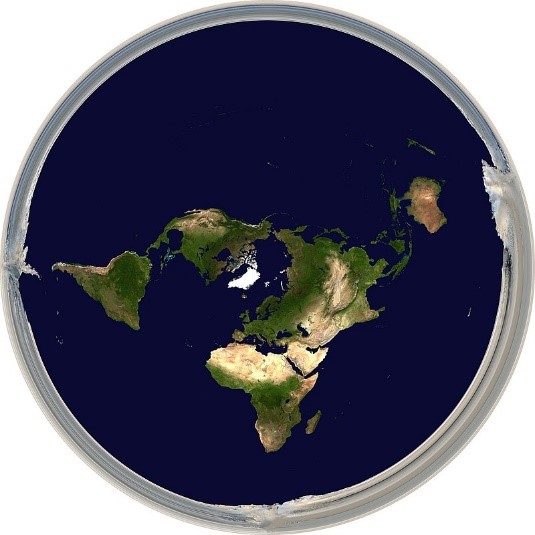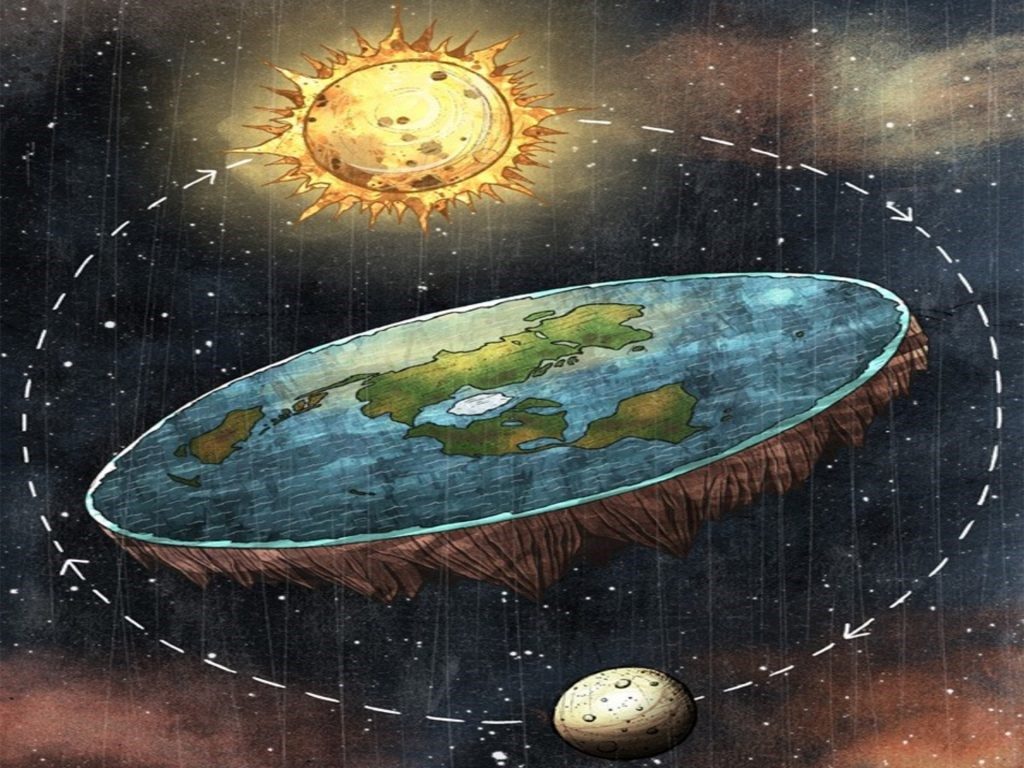by Wan Zamzaidi Wan Zakaria
Throughout our lives, we have seen many scientific theories that has been fed to us from the big bang theory, to the Darwin theory of evolution, and many more. Moving forward into this millennium era, another theory of science has been increasingly getting the attention of the public is the ‘flat earth theory’. The flat earth theory didn’t just recently arise as a topic of belief. The flat earth theory could be identified during the dark ages where Christianity did not support the idea that the world was spherical (Allergo, 2017). However from the 7th century, monks and scholars have come up with writing on evidence to show that the world is round. The Islamic world also concurred to the same ideas with their beliefs and scholars and nobody had issues with this idea (Crindle, 1987). Beyond academics of the world, even an empty headed sailor recognized that the earth was spherical with the obvious fact that ships disappear over the horizon with the bottom first the sail to be the last of sight. The same idea applies when seeing land from ships. Evidently from these ideas, it is obvious that the surface curves continually at a certain point, making it one of the clear evidence that the world is spherical.
However, there are percentage of people from around the world who still believes that the world is flat! In a simple poll done in 2018 by the massive market research firm YouGov, results showed that;
- 84% of respondents said they have always believed the world is round
- 5% stated “I always thought the world is round, but more recently I am skeptical/have doubts”,
- 2% stated “I always thought the world is flat, but more recently I am skeptical/have doubts”
- and 2% went with “I have always believed the world is flat”.
- The remaining 7% stated “Other/not sure”.
The results shows a small number of flat-earth believers, but is in on a rise as the power of the digital media especially the internet are increasingly showing more and more content that influence and suggest that the world is flat. People who believes in this flat earth theory are more widely known as flat-earthers, and every day, their flat earth society is convincing others with their flat earth society movements (Hiskey, 2019).
So, what does flat-earth-society believes in?

The flat earth society was formed to promote what they think is a misconception of how earth is believed to be spherical. One of the beliefs of this society is that earth is actually shaped like a disc, with the outer rings being Antarctica acts as a border of ice walls. Gravity is formed because earth is moving forward like a rocket creating downward energy, while the moon and the sun is circling on top of the earth disc. (The Flat Earth Society, 2019)

They believe that the earth’s night and day cycle happens when the moon and the sun circles the atmosphere of the earth like a spotlight, whereas gravity is an illusion. The flat earth is said to be accelerating upwards hence pushing us down creating a sense of ‘false gravity’. What lies underneath earth is unknown because there has been no exploration and they believe that the world powers (governments) are purposely avoiding people from exploring this. From their point of view, it just might be pile or soil and rocks. These are among the elaborate geometric theories that flat-earthers have come up with to supposedly make it all work.
The resurgence of the flat earth conspiracy
We knew that the earth was round since more than 2000 years ago. How can it be possible that people are still arguing about this despite all the scientific facts and evidence that is clearly available? In our everyday life, at a certain degree we may feel like the world is flat through experience. However, this belief can only exist if the people ignore the centuries of evidence that have been accumulated showing that the earth is spherical.
With the new media especially the internet, it has helped this society to influence more people by tapping into high profile people such as celebrities and influencers in social media to slowly plant the flat earth theory into the minds of the public. Slowly, this theory is making a rise in social media platforms. The new generation that we live in nowadays consists of many social media users, but not many are actually media literate people. Online users tend to read through content that does not have research credibility with weak resources. However, because the social media platform are widely used, it creates a sense of belonging to the users and does have an effect towards their subconscious minds to believe in something even if they don’t know anything about.
Apart from that, studies have shown that people that tend to believe in conspiracy theories have the psychological need to be ‘unique’ and different from other people (Lantian, Muller, Cecile, & Douglas, 2017). What could be more unique than believeing in something that could be so outlandish? Because of a social trend that is growing like mushrooms in the social media, people tend to jump on the bandwagon to be part of something they do not know entirely. A psychologist research from University or Kent, Karen Douglas added that all conspiracy theories share a basic thrust. They present an alternative theory about an important issue or event, and construct an (often) vague explanation for why someone is covering up that “true” version of events. “One of the major points of appeal is that they explain a big event but often without going into details,” she said. “A lot of the power lies in the fact that they are vague.”
The movement of the flat-earth-society also have effects on the way the public perceives the authorities. They believes that it is just something the powerful people trying to hide, but form what? And because of these beliefs, it is indirectly cultivating people to disregard the authorities and also scientific evidence that have existed throughout of the century. In a way, it is considered dangerous as it may create more waves of conspiracy theories that will influence people to discard actual science and evidence.
So which side are you in? Is the earth is flat, or spherical?
References
(2019, April 12). Retrieved from The Flat Earth Society: https://www.tfes.org/
Allergo, J. J. (2017). The bottom of the universe: Flat earth science in the Age of Encounter. Sage Journals, 61-85.
Crindle. (1987, 6 25). Cosmas Indicopleustes, Christian Topography. Retrieved from Christian Topography: http://www.ccel.org/ccel/pearse/morefathers/files/cosmas_00_1_preface.htm
Hiskey, D. (2019, April 12). Retrieved from Today I FOund Out: http://www.todayifoundout.com/index.php/2019/06/who-started-the-flat-earth-conspiracy-theory-how-many-actually-believe-this-and-what-do-they-believe-exactly/
Lantian, A., Muller, D., Cecile, N., & Douglas, K. M. (2017). “I know things they don’t know!”: The role of need for uniqueness in belief in conspiracy theories. Social Psychology 48(3), 160-173.